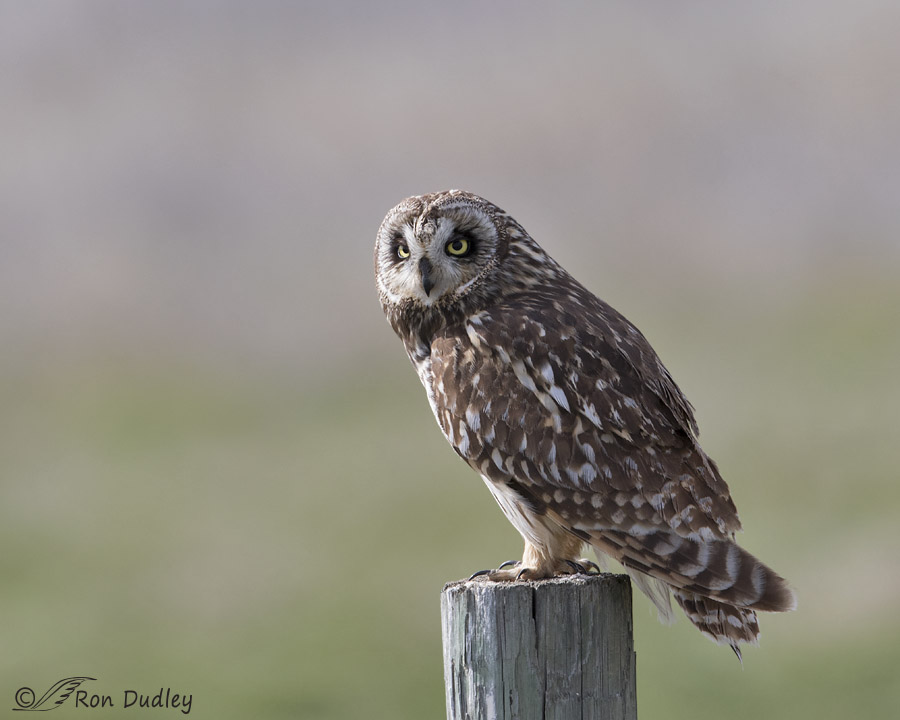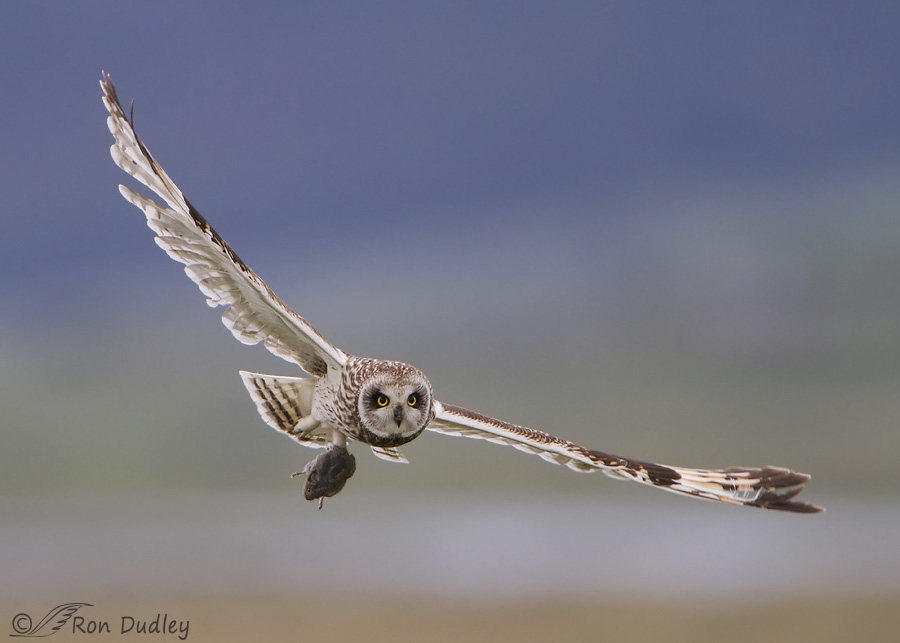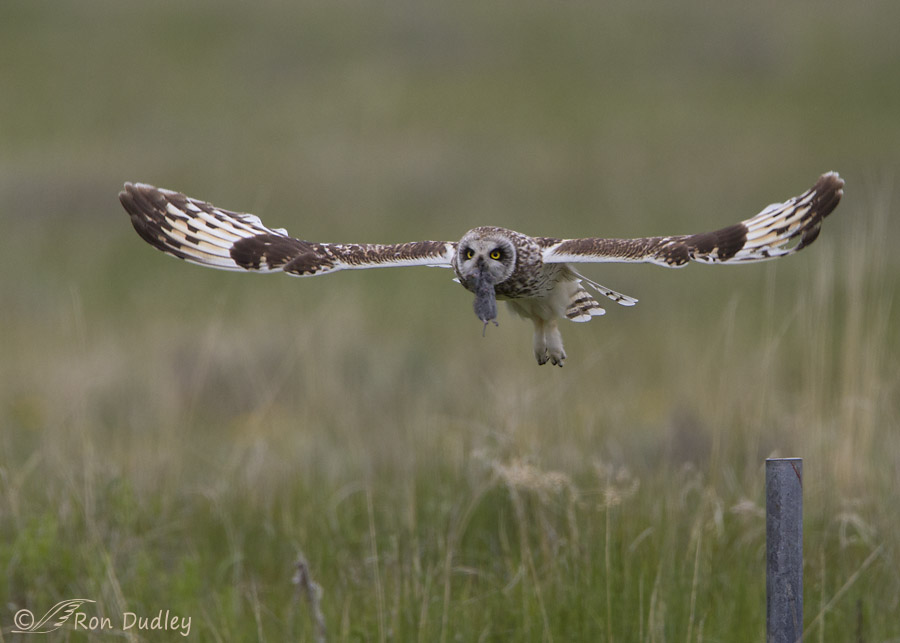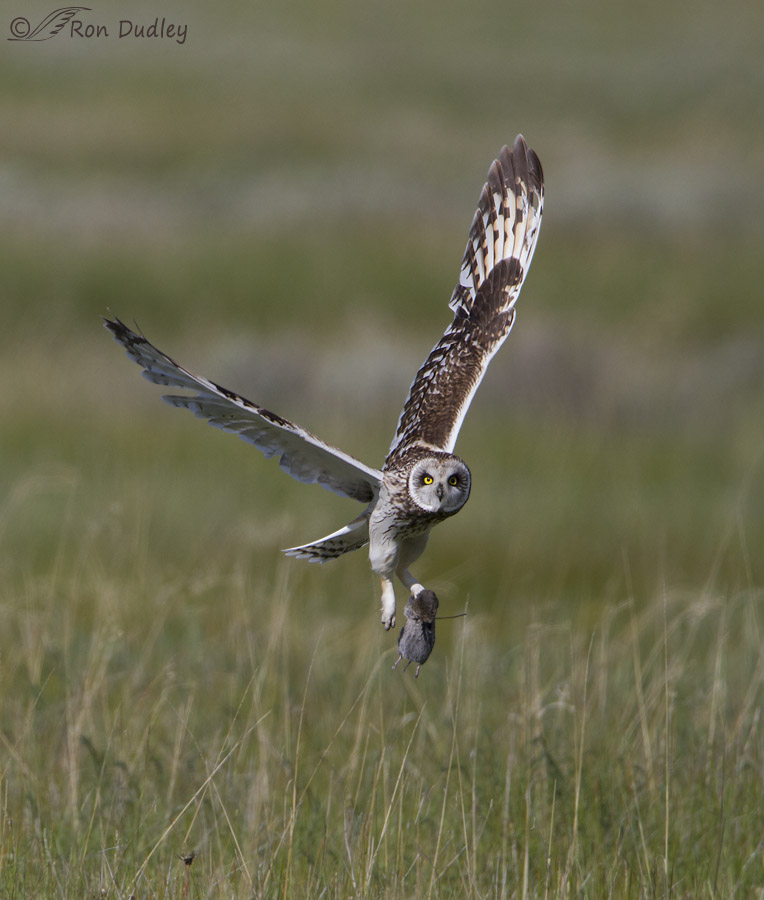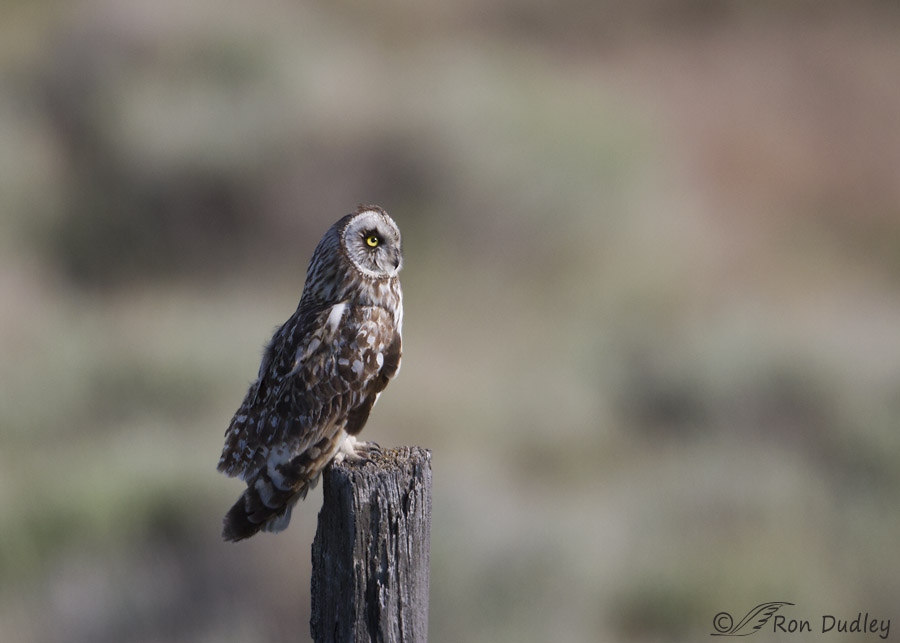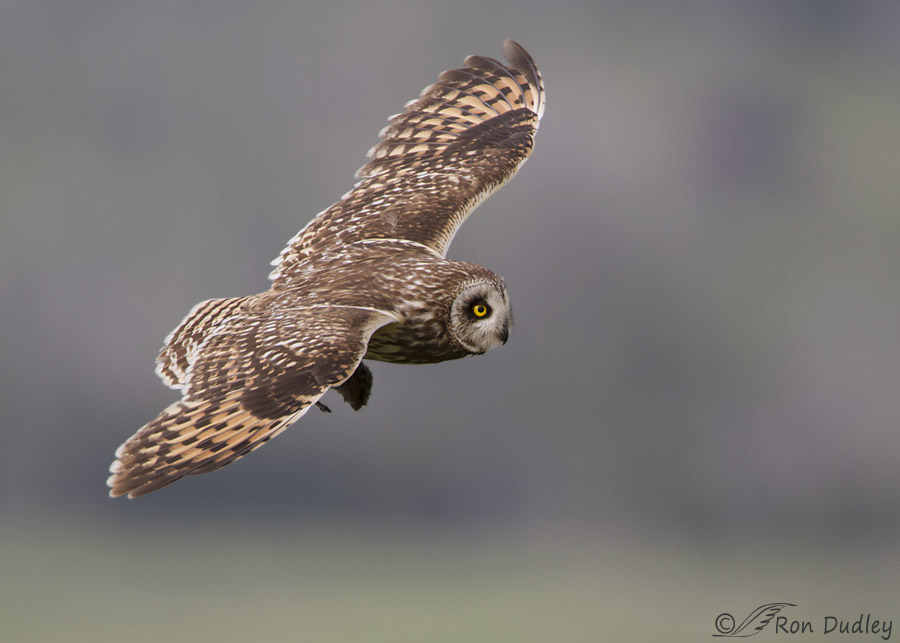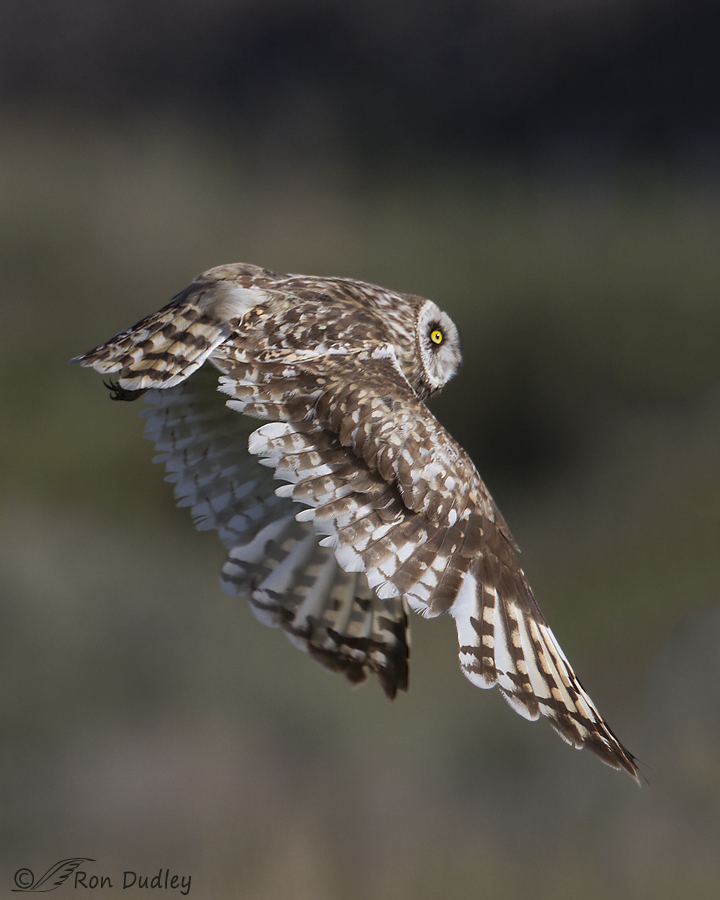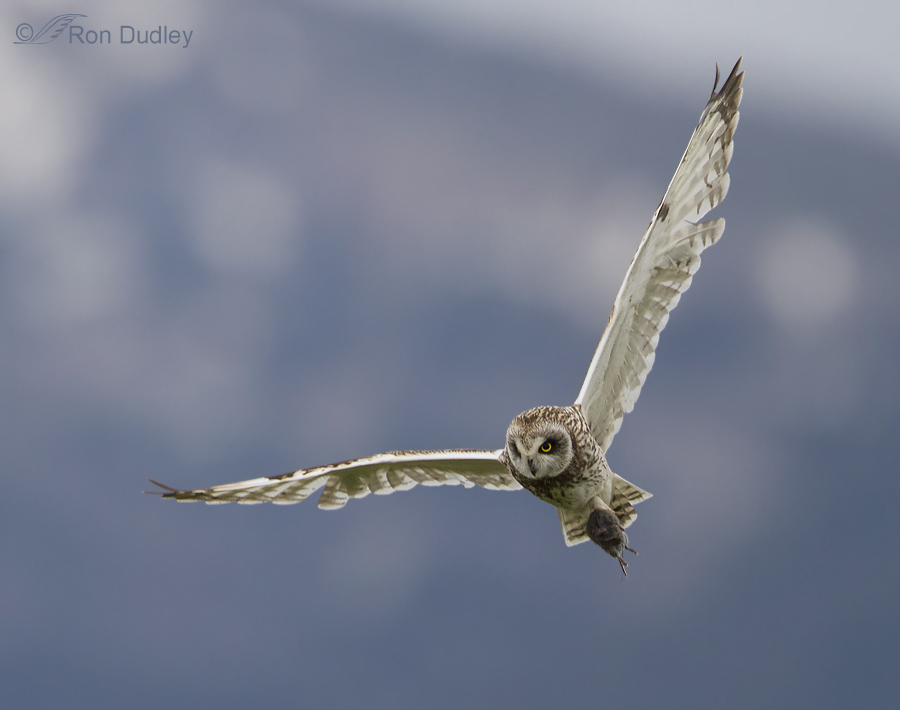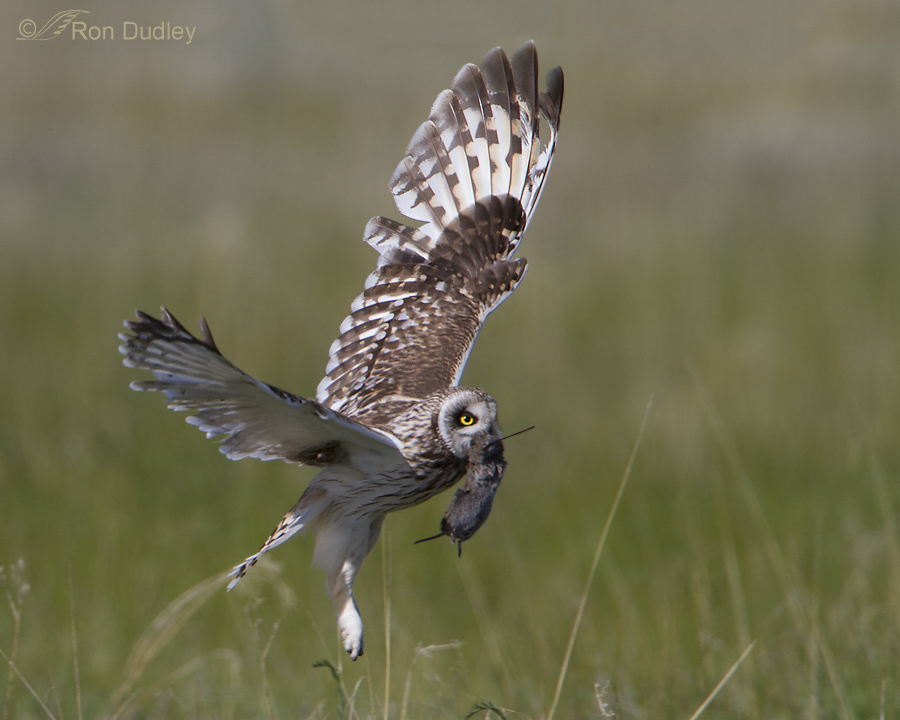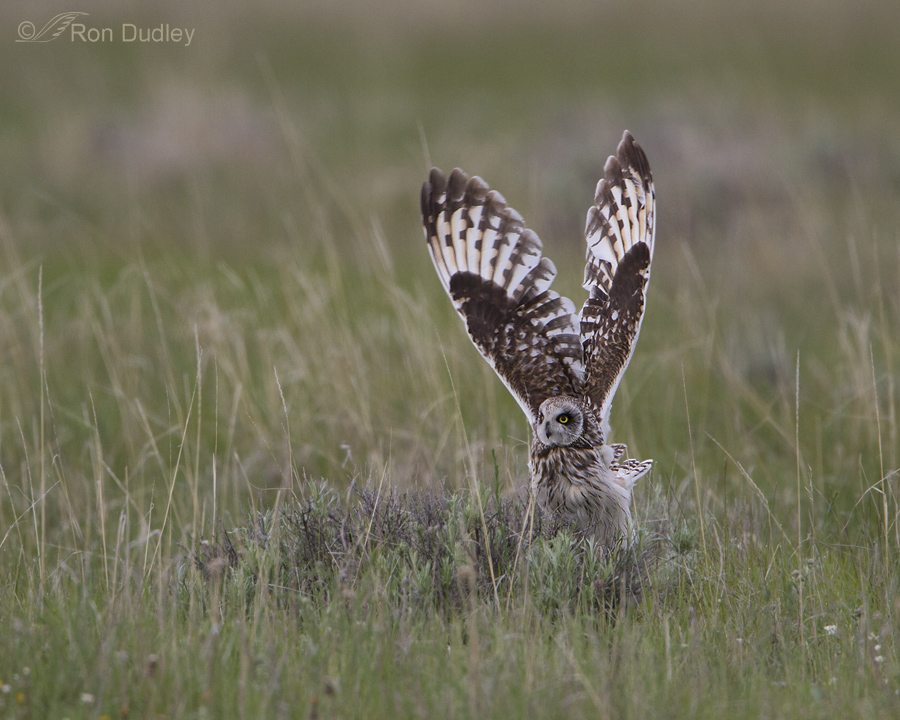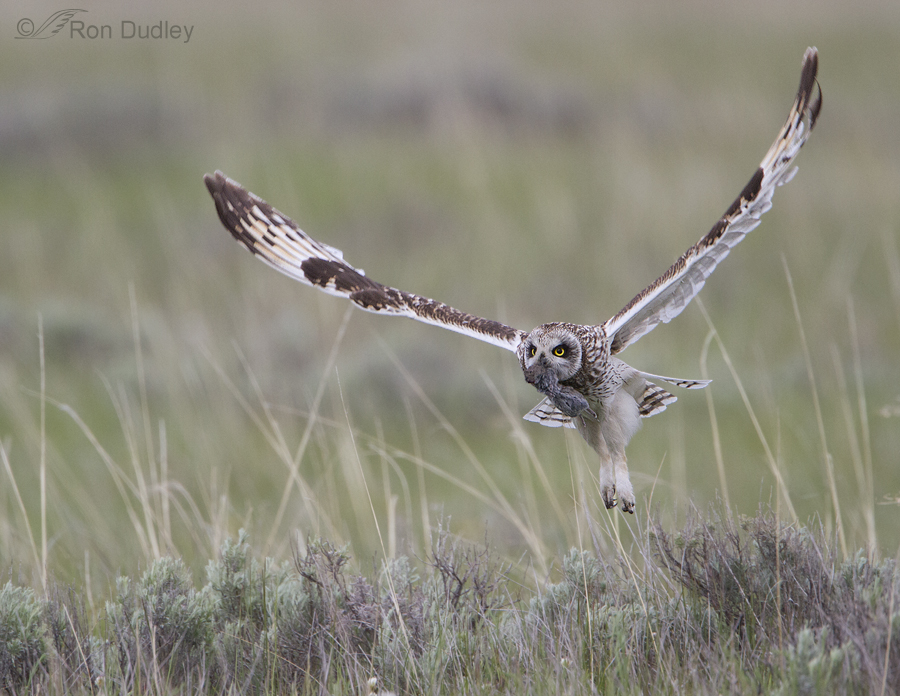Tag: short eared owl
Short-eared Owl Replay
Male Short-eared Owl – A Creature Of Habit
Short-eared Owl In Flight With Prey (and the perception of baiting)
A Few Seconds, A Light Change – What A Difference!
Short-eared Owl In Flight (with prey in silhouette)
Short-eared Owl In Flight Against A Darker Background
Short-eared Owl Pushing Off With His Talon-tips
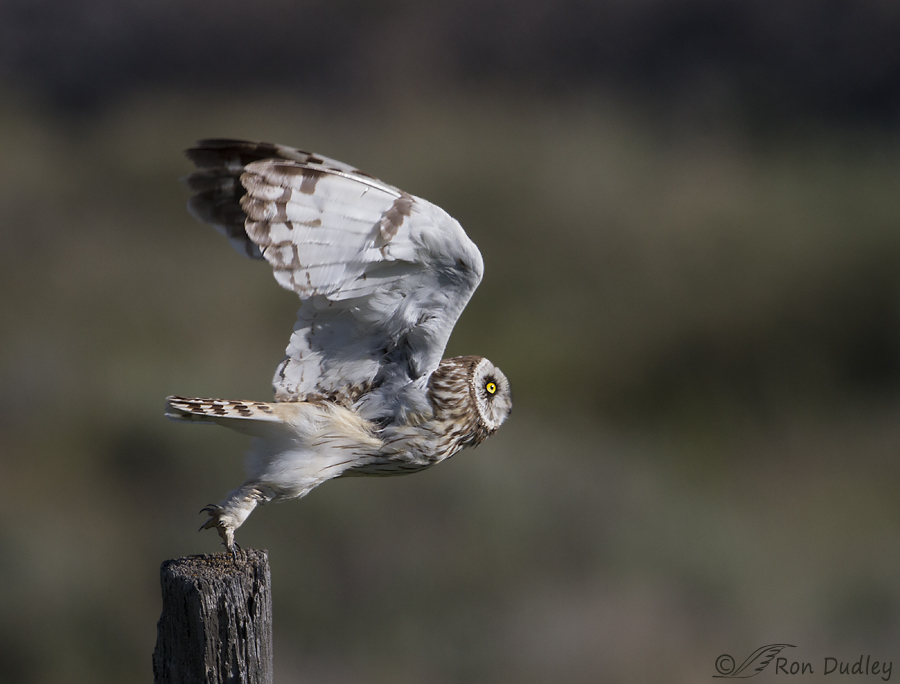
On our Montana trips I’m always looking for Short-eared Owls but sadly, unlike just a few years ago when they were relatively abundant, they’re virtually nonexistent in the Centennial Valley these days. I’m pretty much convinced their absence is largely due to all the cattle (mostly yearlings who are the juvenile delinquents of the bovine world and they really tore up the place) that were allowed to graze Red Rock Lakes National Wildlife Refuge a couple of years ago.
Short-eared Owl With Prey
Short-eared Owl With Huge Vole (or is it something else?)
Short-eared Owl Flight Sequence In Habitat
Short-eared Owl Carrying A Vole In Its Beak (for a change)
Short-eared Owls And The “Handedness Phenomenon”
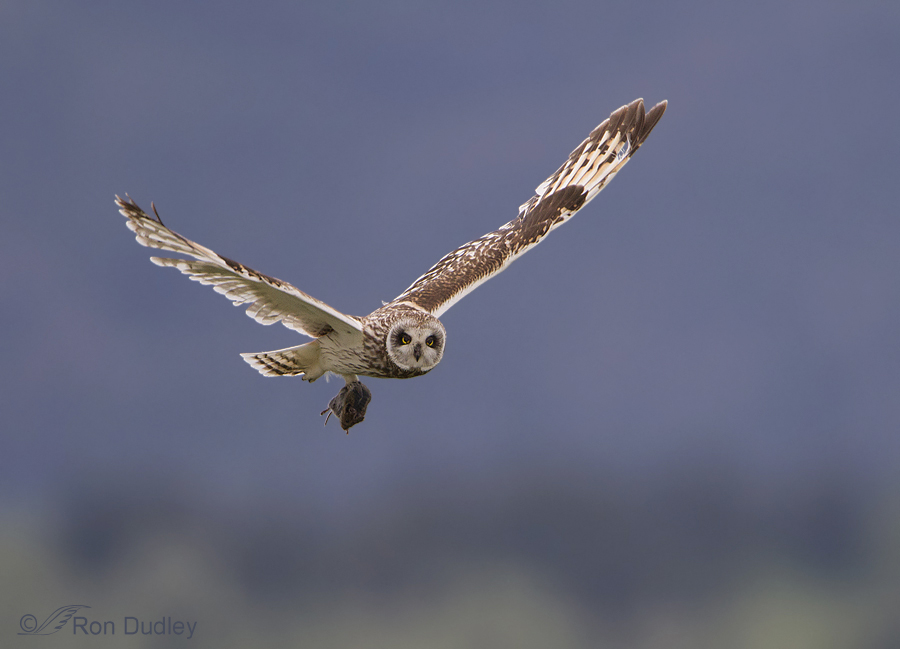
Handedness is a preference for using one hand (or limb) as opposed to the other. It’s a phenomenon many of us associate strictly with humans but other vertebrates can also show handedness, including birds. For example, many parrot species have a strong and consistent preference for using their left foot when bringing food to the beak.
Based on my own observations in the field I believe that Short-eared Owls may also display handedness.
The Interdependence Of Short-eared Owls And Voles
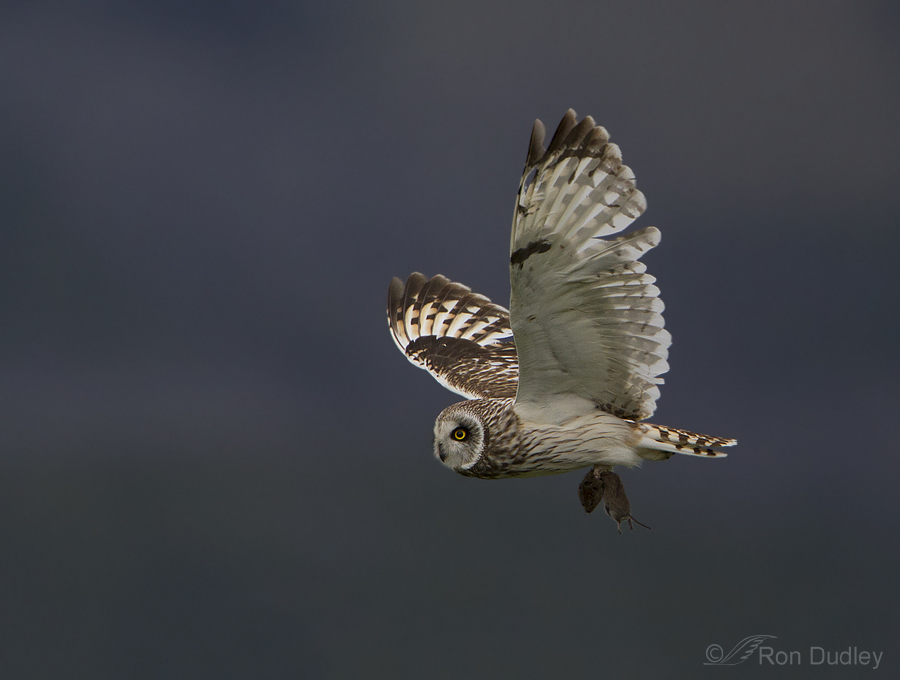
Though Short-eared Owls are one of the worlds most widespread owls, the species is highly dependent on the density of its small mammal prey, voles in particular. Since vole populations fluctuate wildly, Short-eared Owls show significant local variation in numbers and reproductive success from year to year.
Owl Head-on Flight Shots Don’t Have To Be Baited
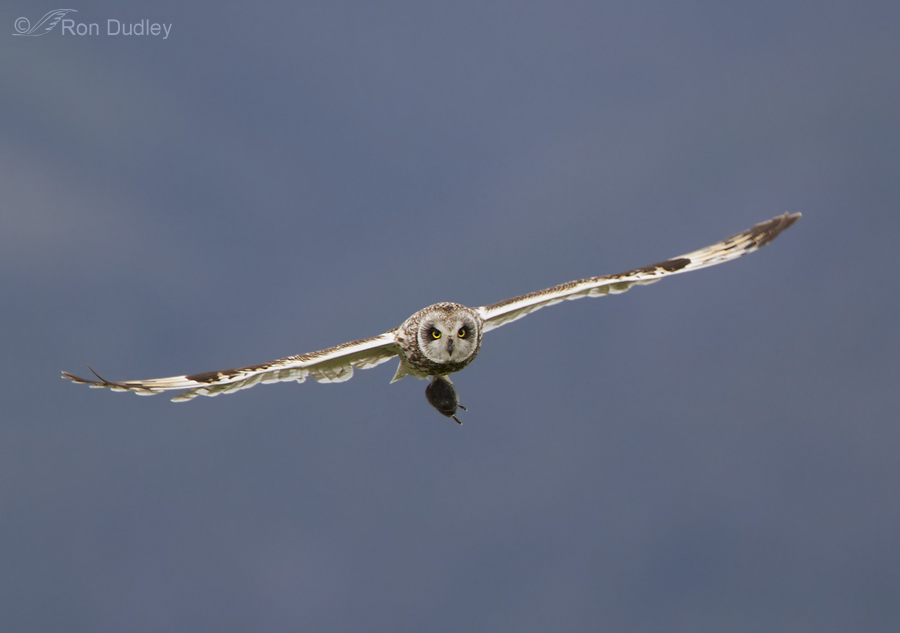
Head-on flight shots of owls have often been baited using live, store-bought mice. I’m of the opinion that baiting raptors is not only unethical (a debate I’d prefer to not get into here) but unnecessary for those kinds of images. However they typically require patience, intimate knowledge of the subject, a keen eye for interpreting behavior and even a little luck.
Short-eared Owl Replay
Male Short-eared Owl – A Creature Of Habit
Short-eared Owl In Flight With Prey (and the perception of baiting)
A Few Seconds, A Light Change – What A Difference!
Short-eared Owl In Flight (with prey in silhouette)
Short-eared Owl In Flight Against A Darker Background
Short-eared Owl Pushing Off With His Talon-tips

On our Montana trips I’m always looking for Short-eared Owls but sadly, unlike just a few years ago when they were relatively abundant, they’re virtually nonexistent in the Centennial Valley these days. I’m pretty much convinced their absence is largely due to all the cattle (mostly yearlings who are the juvenile delinquents of the bovine world and they really tore up the place) that were allowed to graze Red Rock Lakes National Wildlife Refuge a couple of years ago.
Short-eared Owl With Prey
Short-eared Owl With Huge Vole (or is it something else?)
Short-eared Owl Flight Sequence In Habitat
Short-eared Owl Carrying A Vole In Its Beak (for a change)
Short-eared Owls And The “Handedness Phenomenon”

Handedness is a preference for using one hand (or limb) as opposed to the other. It’s a phenomenon many of us associate strictly with humans but other vertebrates can also show handedness, including birds. For example, many parrot species have a strong and consistent preference for using their left foot when bringing food to the beak.
Based on my own observations in the field I believe that Short-eared Owls may also display handedness.
The Interdependence Of Short-eared Owls And Voles

Though Short-eared Owls are one of the worlds most widespread owls, the species is highly dependent on the density of its small mammal prey, voles in particular. Since vole populations fluctuate wildly, Short-eared Owls show significant local variation in numbers and reproductive success from year to year.
Owl Head-on Flight Shots Don’t Have To Be Baited

Head-on flight shots of owls have often been baited using live, store-bought mice. I’m of the opinion that baiting raptors is not only unethical (a debate I’d prefer to not get into here) but unnecessary for those kinds of images. However they typically require patience, intimate knowledge of the subject, a keen eye for interpreting behavior and even a little luck.


